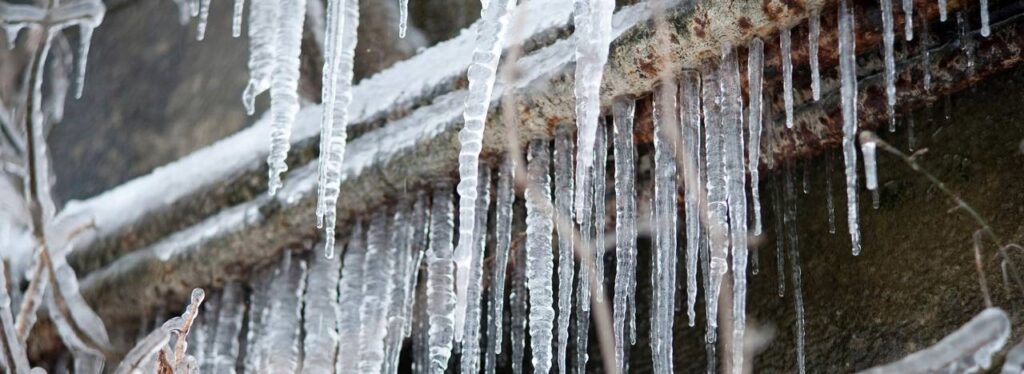This great article listed below involving How To Avoid Freezing Pipes is extremely intriguing. Don't miss it.

Winter can damage your pipes, particularly by freezing pipelines. Right here's just how to stop it from occurring and what to do if it does.
Introduction
As temperature levels decrease, the threat of frozen pipes rises, possibly leading to pricey repairs and water damages. Comprehending exactly how to prevent icy pipelines is crucial for homeowners in cool climates.
Understanding Icy Pipes
What creates pipes to freeze?
Pipelines freeze when revealed to temperatures listed below 32 ° F (0 ° C) for prolonged durations. As water inside the pipes ices up, it expands, taxing the pipeline walls and potentially triggering them to break.
Risks and problems
Frozen pipes can lead to supply of water interruptions, residential or commercial property damages, and pricey repair services. Burst pipelines can flooding homes and cause extensive structural damages.
Indications of Frozen Pipeline
Identifying icy pipelines early can avoid them from breaking.
How to determine icy pipelines
Look for reduced water circulation from faucets, unusual odors or noises from pipelines, and noticeable frost on exposed pipes.
Avoidance Tips
Shielding at risk pipes
Cover pipes in insulation sleeves or use warm tape to secure them from freezing temperatures. Concentrate on pipelines in unheated or outside areas of the home.
Heating methods
Keep interior rooms adequately heated, specifically locations with pipes. Open cabinet doors to enable cozy air to distribute around pipelines under sinks.
Protecting Outside Plumbing
Garden pipes and outdoor faucets
Separate and drain yard hose pipes prior to winter months. Set up frost-proof spigots or cover outside taps with insulated caps.
What to Do If Your Pipelines Freeze
Immediate activities to take
If you think frozen pipelines, keep faucets available to eliminate pressure as the ice thaws. Utilize a hairdryer or towels soaked in warm water to thaw pipelines gradually.
Long-Term Solutions
Structural adjustments
Take into consideration rerouting pipelines far from exterior wall surfaces or unheated areas. Include added insulation to attic rooms, cellars, and crawl spaces.
Upgrading insulation
Buy top quality insulation for pipes, attics, and wall surfaces. Correct insulation assists keep regular temperature levels and lowers the threat of frozen pipelines.
Conclusion
Protecting against icy pipelines needs aggressive procedures and fast actions. By recognizing the reasons, signs, and preventive measures, home owners can protect their plumbing during winter.
5 Ways to Prevent Frozen Pipes
Drain Outdoor Faucets and Disconnect Hoses
First, close the shut-off valve that controls the flow of water in the pipe to your outdoor faucet. Then, head outside to disconnect and drain your hose and open the outdoor faucet to allow the water to completely drain out of the line. Turn off the faucet when done. Finally, head back to the shut-off valve and drain the remaining water inside the pipe into a bucket or container. Additionally, if you have a home irrigation system, you should consider hiring an expert to clear the system of water each year.
Insulate Pipes
One of the best and most cost-effective methods for preventing frozen water pipes is to wrap your pipes with insulation. This is especially important for areas in your home that aren’t exposed to heat, such as an attic. We suggest using foam sleeves, which can typically be found at your local hardware store.
Keep Heat Running at 65
Your pipes are located inside your walls, and the temperature there is much colder than the rest of the house. To prevent your pipes from freezing, The Insurance Information Institute suggests that you keep your home heated to at least 65 degrees, even when traveling. You may want to invest in smart devices that can keep an eye on the temperature in your home while you’re away.
Leave Water Dripping
Moving water — even a small trickle — can prevent ice from forming inside your pipes. When freezing temps are imminent, start a drip of water from all faucets that serve exposed pipes. Leaving a few faucets running will also help relieve pressure inside the pipes and help prevent a rupture if the water inside freezes.
Open Cupboard Doors
Warm your kitchen and bathroom pipes by opening cupboards and vanities. You should also leave your interior doors ajar to help warm air circulate evenly throughout your home.

We hope you enjoyed reading our article on How to Prevent Your Pipes From Freezing. Many thanks for finding the time to browse our posting. If you enjoyed our article please don't forget to pass it around. I value reading our article about Preventing and dealing with frozen pipes.
Information